The advent of autonomous driving in China has already provoked fundamental changes in the country’s automotive industry. For example, so-called robo-taxis are now commercially operating on Chinese streets in 2021. These vehicles drive fully autonomously, transporting passengers without human drivers. Autonomous vehicle (AV) sales in China are expected to exceed 33 million in 2040, approximately 650 times more than the forecasted 51,000 AVs sold in 2021. Autonomous vehicle (AV) sales in China are expected to exceed 5 million in 2035, representing approximately one quarter of the global sales volume of self-driving vehicles. This dynamic development inevitably raises the question of whether future car transportation will have influence from car ownership, or whether we simply hire autonomous vehicles as we need them. It is clear that AI-based intelligent transportation requires car manufacturers to rethink their operations as new business models emerge.
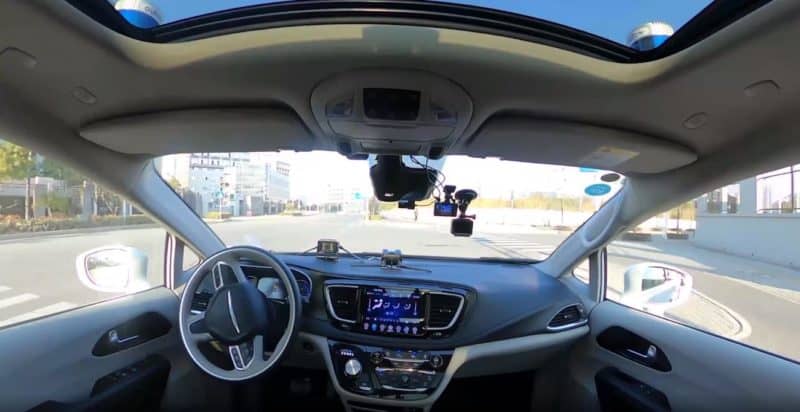
China as a potential autonomous driving epicenter
China is the world’s second largest market for autonomous driving technology.
Consequently, it offers massive opportunities for domestic manufacturers and global firms alike. According to US-based management consultants AlixPartners, the autonomous vehicle (AV) market will reach $32 billion by 2025, equaling a 30% increase compared to 2020. Autonomous driving in China will gain further momentum as driverless shuttles have started to become publicly available, and China potentially taking the lead in the global autonomous vehicle market.
China’s ambitions to accelerate the hands-off-the-wheel transformation
Clearly, one of the major drivers behind China’s accelerating transformation towards self-driving technology is its favorable policy. Beijing follows an active approach to boost autonomous driving in China: permitting extensive AV testing on highways as well as the goal to integrate partial self-driving technology in 50% of all new-auto sales by 2025 undermine China’s ambitions to adopt large-scale, self-driving technology.
Mobility as a Service: rethinking the status quo approach to car transportation
At the core of China’s self-driving revolution, the concept of shared Mobility-as-a-Service (MaaS) has been investigated extensively as driverless technology advances. The key idea is that autonomous vehicles can increase road safety, while simultaneously substantially reducing traffic congestions as well as minimizing the environmental impact. As a result, an increasing number of people show willingness to use shared autonomous vehicles, thus initiating a shift away from car ownership towards a considerably more efficient MaaS model. A comparative study conducted in 2019 revealed that consumer willingness to give up vehicle ownership for robo-taxi services is highest in China (84%), whereas German consumers (52%) and US consumers (44%) show a lower readiness to give up their vehicle.
Chinese firms taking the lead in global autonomous driving technology development
Among the world’s most innovate companies to develop driverless vehicles, one encounters several Chinese start-ups. Most notably, Internet giant Baidu and Shenzhen-based AutoX have been driving forward the idea of autonomous driving in China. Now competing with US firms such as Waymo and Tesla, Chinese producers have recently outperformed their competitors, which can partially also be attributed to shorter periods of lockdown during the pandemic. Besides massive AV testing all throughout China, one region has emerged to be at the center of China’s self-driving revolution: Shenzhen.
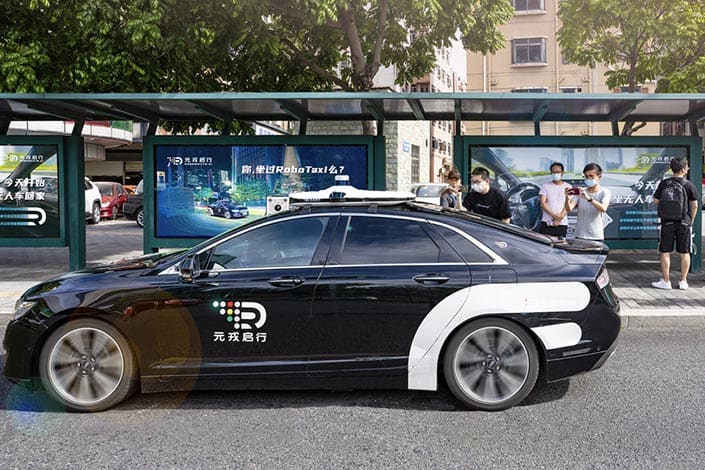
Shenzhen: robo-taxi capital and catalyst for autonomous driving in China
Embedded into the Greater Bay Area, Shenzhen is one of the cities in China with the highest concentration of self-driving start-ups, such as Deeproute.ai, pony.ai and AutoX. After the electrification of Shenzhen’s bus and taxi fleet, the city has successfully addressed vehicle connectivity and intelligentisation. For the reason of Shenzhen’s leading position in 5G technology and world-leading technical networking, many firms have chosen the innovative technology hub as their research lab. Consequently, streets in Shenzhen are increasingly being used by autonomous, shared vehicles, which undermines the overall positive attitude towards driverless vehicles.
AutoX as a leading firm of China’s self-driving revolution after being the first to operate fully driverless
After testing extensively in Shenzhen’s everyday traffic, AutoX was the first firm to receive an approval from local authorities to make its vehicles available to public users in January 2021. This was a milestone for shared autonomous vehicles as Chinese consumers could for the first time book robo-taxi services by simply using a smartphone application. Since then, AutoX has in no way limited innovation: the company is moving forward with developing its new Gen5 system, which outperforms previous technological solutions. This move will allow AutoX vehicles to handle complex urban situation better and safer, even at higher speeds.
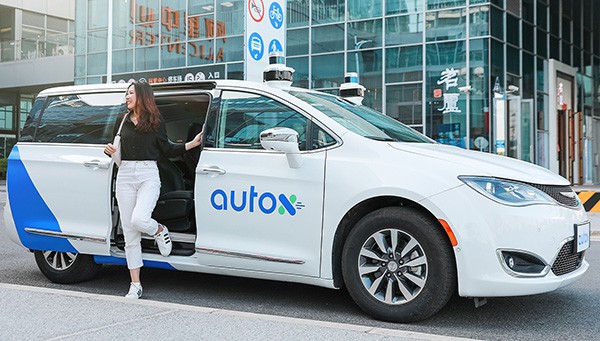
Apollo Robotaxi: Baidu launching a driverless shuttle service in Beijing
Baidu is another Chinese company to perform extensive testing of self-driving vehicles throughout Chinese metropoles, primarily Changsha, Cangzhou, Beijing, Guangzhou and Shanghai. As of 2021, the company has started public testing of its vehicles under the umbrella of its “Apollo Go” robo-taxi service. The company recently followed suit with competitor AutoX, as it now offers fully driverless vehicles available for the public in Beijing’s Shougang Park. Baidu has announced an ambitious plan, as it aims at increasing its fleet from currently 500 robo-taxis to 3,000 over the next 3 years.
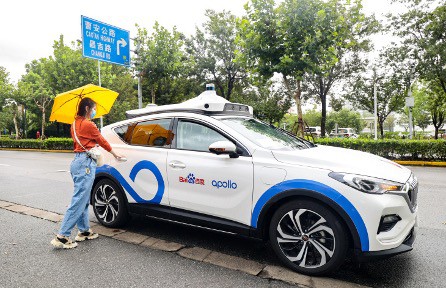
Consumer preferences: Chinese consumers’ eagerness to adopt fully autonomous driving
A potential paradigm shift from car ownership to a predominantly service-based car transportation system does not only require the right regulatory setting and technological solutions. Above all, consumers must be willing and open to AVs. Chinese companies appear to embrace the opportunities of driverless vehicles. Do Chinese consumers share this attitude or does their perspective differ? According to a study published in 2020, 58% of Chinese interviewees report to feel safe in autonomous vehicles. The subjective perception of safety is thus substantially higher than in other countries included in the study, ranging from 18% to 36%. In brief, the Chinese population shows a fascination for autonomous driving, even though safety concerns can arise among policymakers and car manufacturers alike.
Driverless in times of a global pandemic: how the COVID-19 crisis fueled autonomous vehicle presence throughout China
The latest push towards autonomous vehicles can most probably be attributed to the global health crisis. Self-driving technology shows undeniable advantages during times of social distancing, as it avoids human interaction, and thus helps curb the infection curve. For example, Chinese retailer JD.com started serving its customers by using autonomous delivery mini-vans. Similarly, demand for food delivery service Meituan’s contactless delivery service of fresh food has skyrocketed during the pandemic in China. Fast food chain KFC has drawn a lot of attention to its futuristic self-driving food trucks, which allow citizens to purchase meals without human interaction. Opportunities for integrating driverless technology into the daily lives of millions of Chinese residents appear to be countless – and an ever-increasing number of companies share the vision of a driverless future.
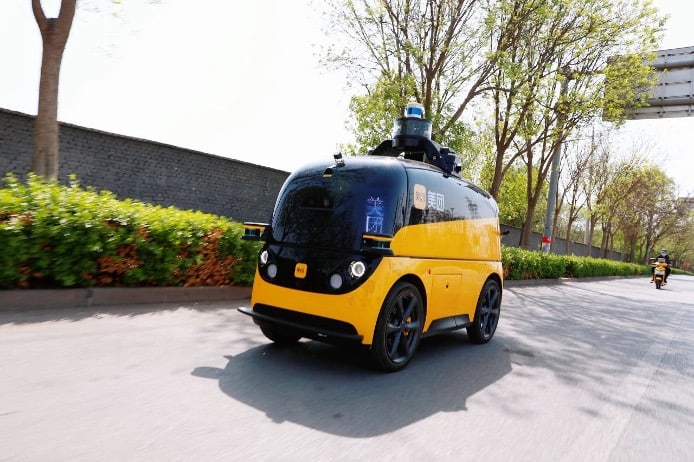
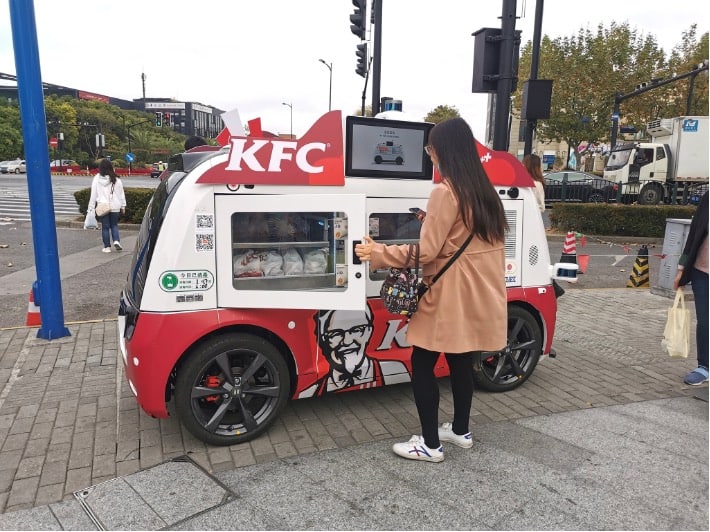
Takeaways of China’s progress towards a driverless future
- Mobiliy-as-a-Service is an ongoing trend in China, and autonomous vehicles amplify this development.
- 2021 has been a milestone in driverless technology development as first companies have started offering robo-taxi services to the general public.
- Consumers in China show eagerness to adopt self-driving technology: they globally show the highest readiness to give up their private car for an efficient, shared AV transportation system.
- Increasing health-consciousness during the pandemic has paved the way for new business models, notably contactless, autonomous delivery services
Author: Fabian Haidegger





